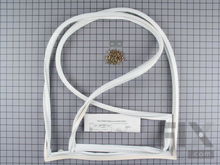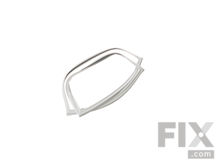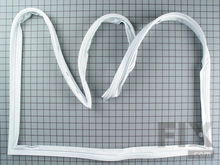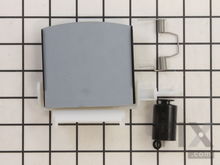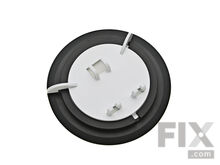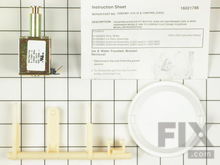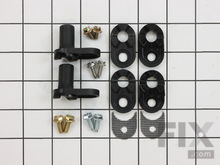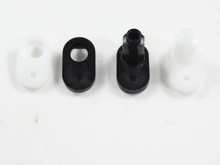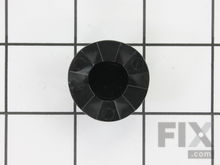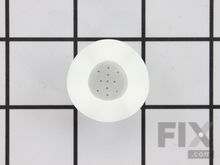How To Repair A Refrigerator Door That’s Sweating
- Rated as EASY
- 769 repair stories
- 4 step by step videos
Fresh Food & Freezer Door Gasket
Your refrigerator and freezer doors have a seal or gasket around the outside, made of vinyl and with an interior magnet so that the closed door is airtight. When the seal is not airtight, the fridge or freezer may be too damp on the inside. You can determine if a damaged door gasket is the reason your fridge is sweating by checking for moisture on the freezer shelves, along the edge of the door, and in the area of the air outlet ducts. Verify that your gasket’s still uniform in shape, flexible, and uncracked. You can check the seal by closing the door on a piece of paper and pulling on the paper to see if the gasket’s holding it tight, as it should. Your door seal will last longer if you clean the gasket of spills or dirt every time it gets dirty. If a gasket needs to be replaced, you can make the job easier by running the new gasket, on low heat, in the clothing dryer so that it will be more flexible and easier to fit onto the fridge door.
Dispenser Door Assembly/Flapper & Ice Door Kit
If the moisture on your fridge is concentrated around the place where ice comes out, it could be that the door to the ice dispenser is not closing correctly or is no longer sealed as it ought to be. This door is more complicated than you might think: there’s a rubber or vinyl seal around the periphery of the door, a spring-loaded hinge, and a solenoid-operated action that can even have a damper so the door doesn’t try to close on one of the ice cubes. Now that you understand the components, you can take off the cover to the dispenser and go through the parts to check for problems. Make sure the hinges have an operational return spring and that they’re mounted correctly in their pivot mechanism. Check the damper and the seal around the door. And go through the solenoid plunger and linkage to ensure they’re operational. Replace anything that is broken, and make sure the door swings open and shut with no restrictions.
Door Closure Cam Kit
If your fridge is a side-by-side model, one possible cause of interior or exterior condensation is a gap in the door seal caused by broken hinge cams. The hinge cams are the small nylon or plastic pieces on the bottom of the door and the top of the hinge. They have sloping shoulders that join them when the door’s shut and allow them to slide against each other to open the door and hold the door open. If there’s a gap in your door that isn’t caused by a worn-out seal gasket or a malfunction in the hinge itself, remove the hinge cover and watch the hinge cams as you open and shut the fridge to make sure they operate the way they ought to. The cam motion for opening the door ought to consist of the door-side cam revolving up from the hinge one. When the door is open, the cam should rest in a catch that holds it open. As the door closes, the cams should junction together.
Door Hinge & Bearing
Fridge and freezer doors that don’t close properly can allow moisture inside, so check the hinges to see if they are the source of the sweaty door problem. Remove the hinge cover and make sure your hinges aren’t worn out or un-lubricated – a dry hinge will make it harder to open and shut the door and sometimes accompanies the door action with a scraping noise or a thump. You may need new hinges or you may just need to apply non-toxic lube to the hinges.
More Repair Parts
Still not sure which part is broken? We can offer you custom troubleshooting help if you search with your model number.





